
To discuss:
How do you think that you would respond in a similar situation? Why?
Case summary:
The nursing student was assigned to accompany a nurse in the intensive care unit (ICU). They were caring for Mr. G, a middle-aged patient with end-stage liver failure. He had been in the coma for several weeks. Mr. G was found to be overwhelmed with the extent of drains, tubes, and technologies that have been used to care for him. The nursing student found that the nurse and some residents immediately started to assess the technological equipment soon after entering the patient’s room. They don’t seem to have any regard or concern for the patient. They had a conversation about the poor condition of the patient in his direct presence. They didn’t touch the patient and not even attempted an interaction with the patient.
Explanation of Solution
In this situation, the nursing student might not be able to confront the nurse and the residents because of the status of being only the student and not a professional nurse. The nursing student might ignore the conversation of them and could try to acknowledge the patient in terms of touch or words. This action might remind the nurse and the resident to follow the lead of the nursing student.
To discuss:
What does this tell you about yourself and about the adequacy of your skills for professional practice?
Case summary:
The nursing student was assigned to accompany a nurse in the intensive care unit (ICU). They were caring for Mr. G, a middle-aged patient with end-stage liver failure. He had been in the coma for several weeks. Mr. G was found to be overwhelmed with the extent of drains, tubes, and technologies that have been used to care for him. The nursing student found that the nurse and some residents immediately started to assess the technological equipment soon after entering the patient’s room. They don’t seem to have any regard or concern for the patient. They had a conversation about the poor condition of the patient in his direct presence. They didn’t touch the patient and not even attempted an interaction with the patient.
Explanation of Solution
The nursing student seems to have good ethical and professional skills. The nursing student also shows respect to the patient’s dignity. Still, the student is in the learning phase only and the skills for professional practice were not found to be adequate in this situation. But the action of the nursing student would set a good example for others in the expression of caring.
To discuss:
What knowledge, skills, and attitudes do you need to develop to continuously improve the quality and safety in a situation like the one experienced by this student nurse?
Case summary:
The nursing student was assigned to accompany a nurse in the intensive care unit (ICU). They were caring for Mr. G, a middle-aged patient with end-stage liver failure. He had been in the coma for several weeks. Mr. G was found to be overwhelmed with the extent of drains, tubes, and technologies that have been used to care for him. The nursing student found that the nurse and some residents immediately started to assess the technological equipment soon after entering the patient’s room. They don’t seem to have any regard or concern for the patient. They had a conversation about the poor condition of the patient in his direct presence. They didn’t touch the patient and not even attempted an interaction with the patient.
Explanation of Solution
The nursing student should work to implement a plan of care that should be focused on the patient rather than the technological equipment. The nursing student could develop the skills of interpersonal, professional, verbal and non-verbal communication, empathy, and showing compassion. The nursing student could acknowledge the patient through touch or words and this action would possibly make other to provide care in an ethical and professional manner.
Want to see more full solutions like this?
Chapter 8 Solutions
TAYLOR FUNDAMENTALS W/ COURSEPOINT ENHA
- a. Define neoplasm b. Differentiate between benign and malignant tumours c. Describe the molecular basis of cancerarrow_forwarddifferentiate the extra heart sounds S3,S4, murmurs and gallopsarrow_forward• Define shock and list types of shock • Discuss pathogenesis of septic shock. • Enumerate the stages of shock. • Define oedema and describe the pathophysiologic mechanisms of oedema with examples.arrow_forward
- Discuss Hypertension under the following headings: Definition Diagnosis Non-pharmacological intervention Drugs Classification Management of a Hypertensive emergencyarrow_forwardExplain how the answer could be 2 or 1.8 WITHOUT changing the questionarrow_forwardoverview of the neurological system, cranial nerves and what part of the body it innervatesarrow_forward
- differentiate structure and function of the peripheral vascular system. what are the normal and abnormal findings of the peripheral arterioles and peripheral venous systemarrow_forwardAn overview of the skin, hair and nails epidermal appendages normal and abnormal findingsarrow_forwarddifferentiate the twelve cranial nerves and how to test themarrow_forward
- What are the nursing interventions for patients with GI problems ? What is the priority ?arrow_forwardAdult Nutrition Assessment Date of consultation: 3/2/25 Reason for Nutrition Assessment: Mrs. Clover was referred to the RD from the ER physician; patient experiencing weight loss, SOB & Edema Nutrition Assessment Data 69 YOF Ht 157 cm, Wt 53 kg. BMI 21.7 Usual wt 55 kg Heart: slight physiologic murmur; lungs: clear; extremities: 3+ edema to bilateral lower legs; elevated BP, abdomen: soft, nontender, active bowel sounds; neurologic: unremarkable; skin: diminished skin tugor. Biochemical Data BUN 72, Creatinine 4.6, Calcium 7.2, Phosphorus 7.3, glucose 105, BNP 720, Albumin 2.0, Na 125, K 3.3, CI 93. Hgb 11.5, Hct 33.2, ALT 29, AST 36, Alkaline phosphatase 120, other relevant labs pending result. Medications Include inhalers, Cymbalta, Neurontin, Seroquel, and topiramate, prilosec, solumedrol, rocephin, zithromax, NaCl 0.45%+50 MEQ sodium bicarbonate @100 ml/hr. No history of herbal supplements. Since her pneumonia diagnosis several days ago, she has felt too weak to prepare meals, she…arrow_forwardAssuming you are a community health nurse, choose a community of your own and perform practically the following and report your findings: a. Community Assessment b. Community Diagnosisarrow_forward
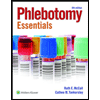 Phlebotomy EssentialsNursingISBN:9781451194524Author:Ruth McCall, Cathee M. Tankersley MT(ASCP)Publisher:JONES+BARTLETT PUBLISHERS, INC.
Phlebotomy EssentialsNursingISBN:9781451194524Author:Ruth McCall, Cathee M. Tankersley MT(ASCP)Publisher:JONES+BARTLETT PUBLISHERS, INC.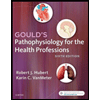 Gould's Pathophysiology for the Health Profession...NursingISBN:9780323414425Author:Robert J Hubert BSPublisher:Saunders
Gould's Pathophysiology for the Health Profession...NursingISBN:9780323414425Author:Robert J Hubert BSPublisher:Saunders Fundamentals Of NursingNursingISBN:9781496362179Author:Taylor, Carol (carol R.), LYNN, Pamela (pamela Barbara), Bartlett, Jennifer L.Publisher:Wolters Kluwer,
Fundamentals Of NursingNursingISBN:9781496362179Author:Taylor, Carol (carol R.), LYNN, Pamela (pamela Barbara), Bartlett, Jennifer L.Publisher:Wolters Kluwer,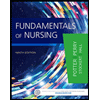 Fundamentals of Nursing, 9eNursingISBN:9780323327404Author:Patricia A. Potter RN MSN PhD FAAN, Anne Griffin Perry RN EdD FAAN, Patricia Stockert RN BSN MS PhD, Amy Hall RN BSN MS PhD CNEPublisher:Elsevier Science
Fundamentals of Nursing, 9eNursingISBN:9780323327404Author:Patricia A. Potter RN MSN PhD FAAN, Anne Griffin Perry RN EdD FAAN, Patricia Stockert RN BSN MS PhD, Amy Hall RN BSN MS PhD CNEPublisher:Elsevier Science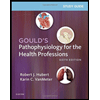 Study Guide for Gould's Pathophysiology for the H...NursingISBN:9780323414142Author:Hubert BS, Robert J; VanMeter PhD, Karin C.Publisher:Saunders
Study Guide for Gould's Pathophysiology for the H...NursingISBN:9780323414142Author:Hubert BS, Robert J; VanMeter PhD, Karin C.Publisher:Saunders Issues and Ethics in the Helping Professions (Min...NursingISBN:9781337406291Author:Gerald Corey, Marianne Schneider Corey, Cindy CoreyPublisher:Cengage Learning
Issues and Ethics in the Helping Professions (Min...NursingISBN:9781337406291Author:Gerald Corey, Marianne Schneider Corey, Cindy CoreyPublisher:Cengage Learning





